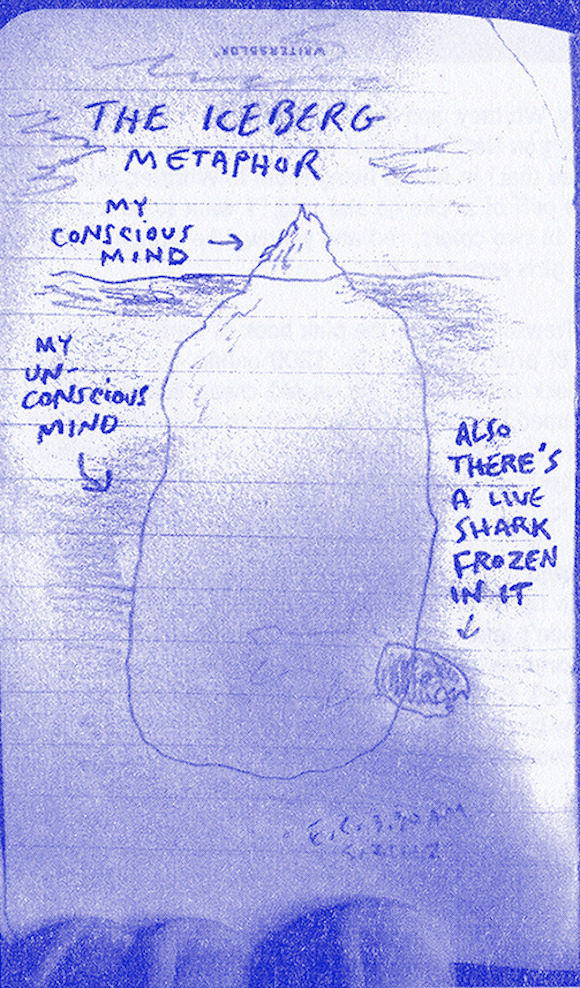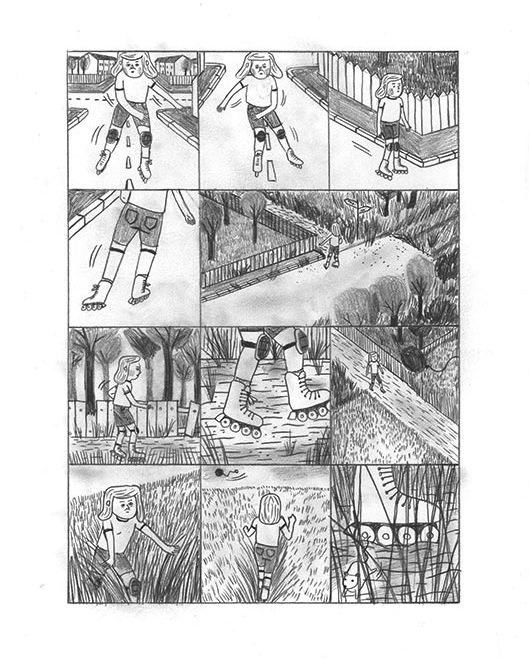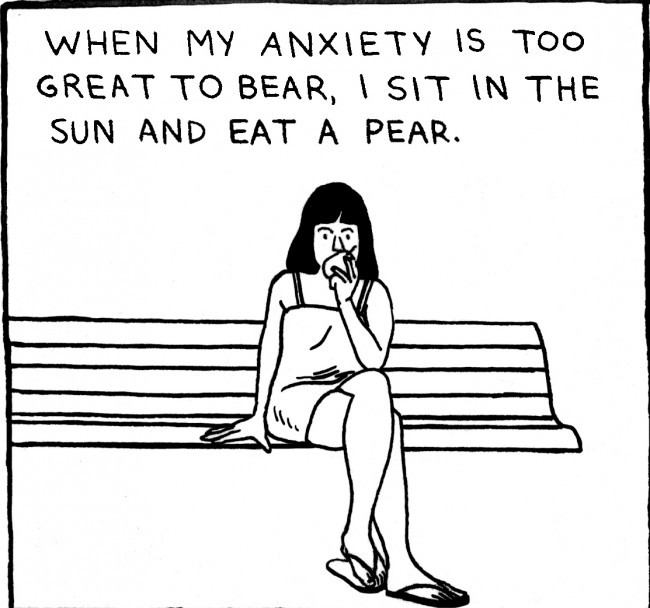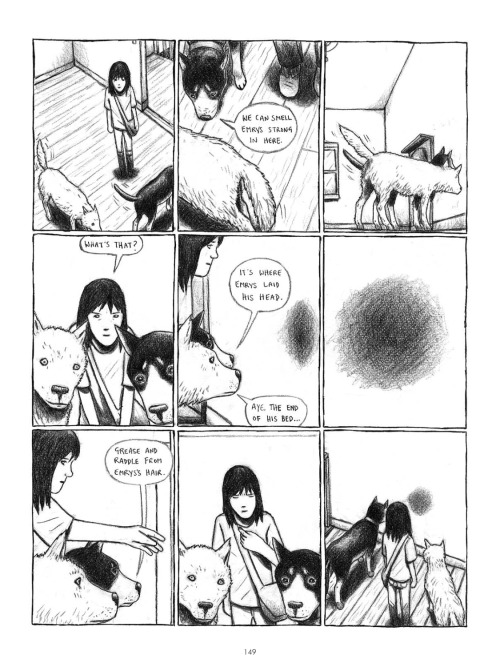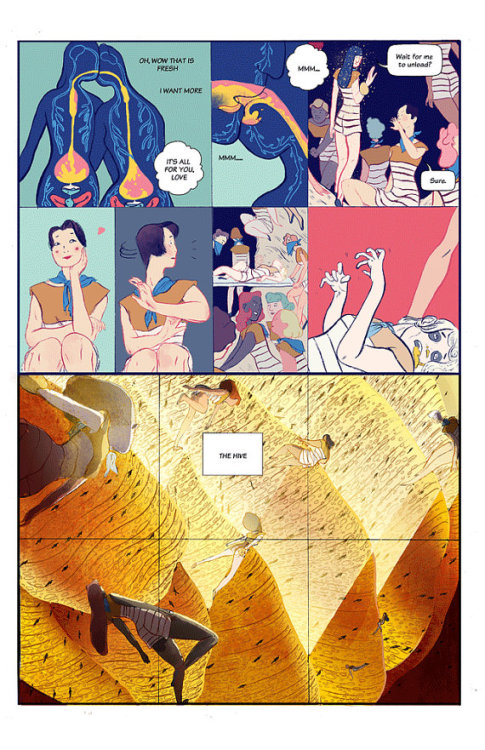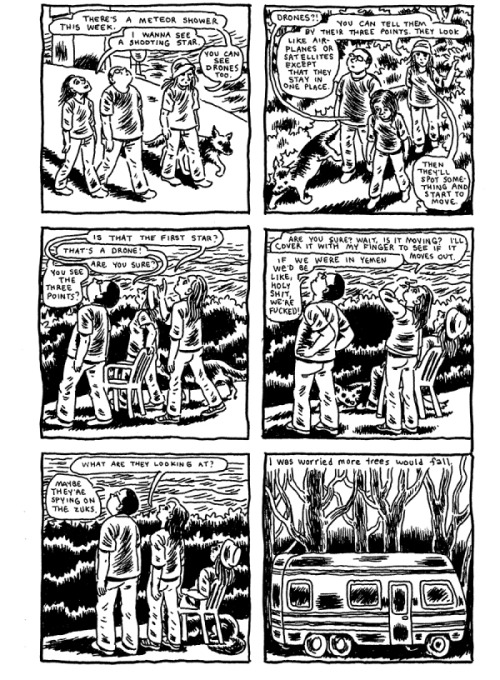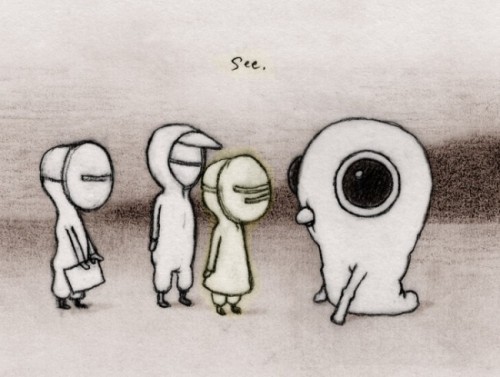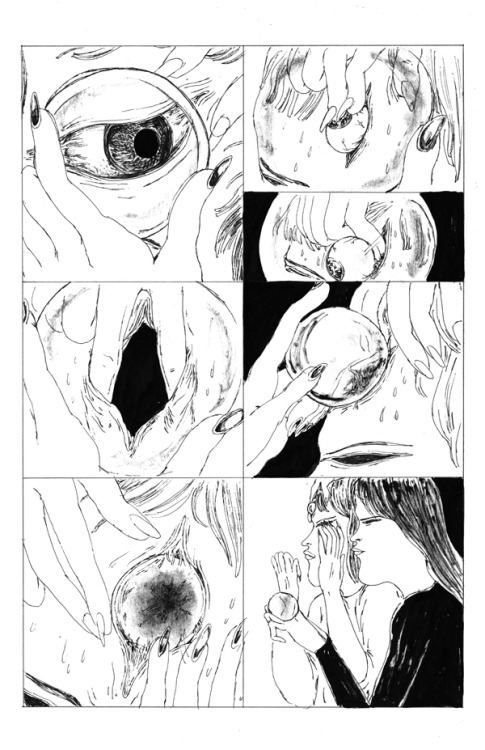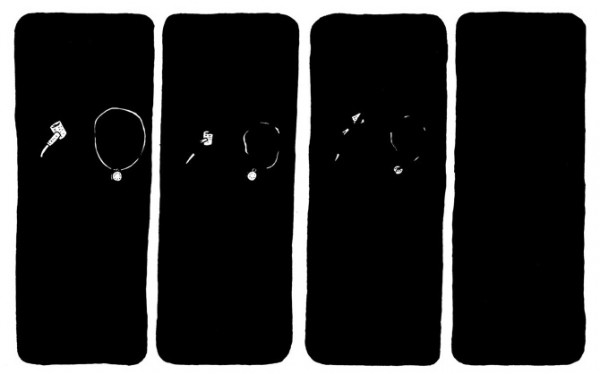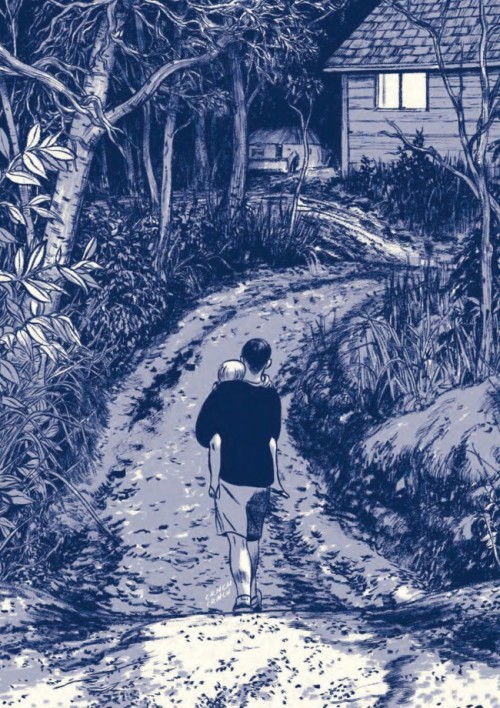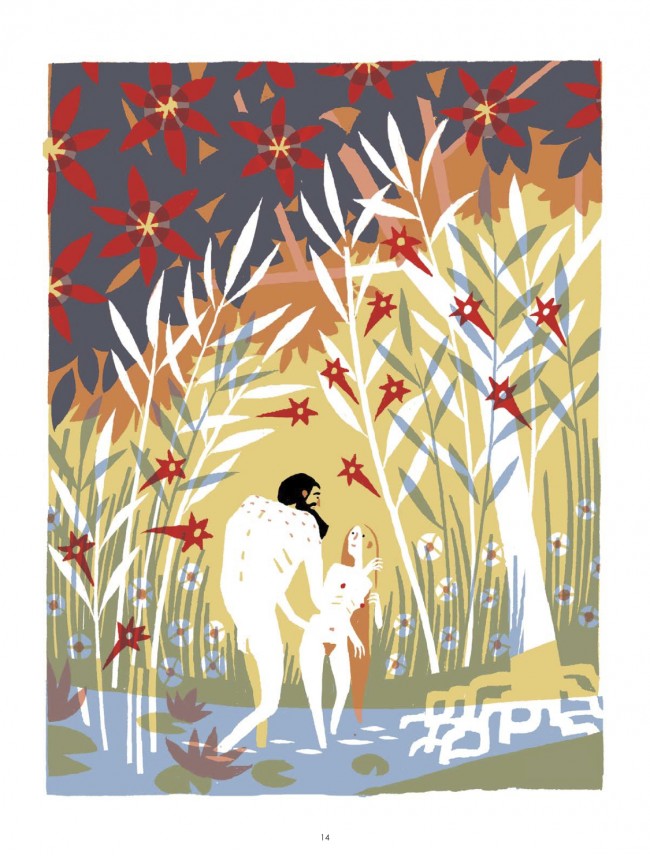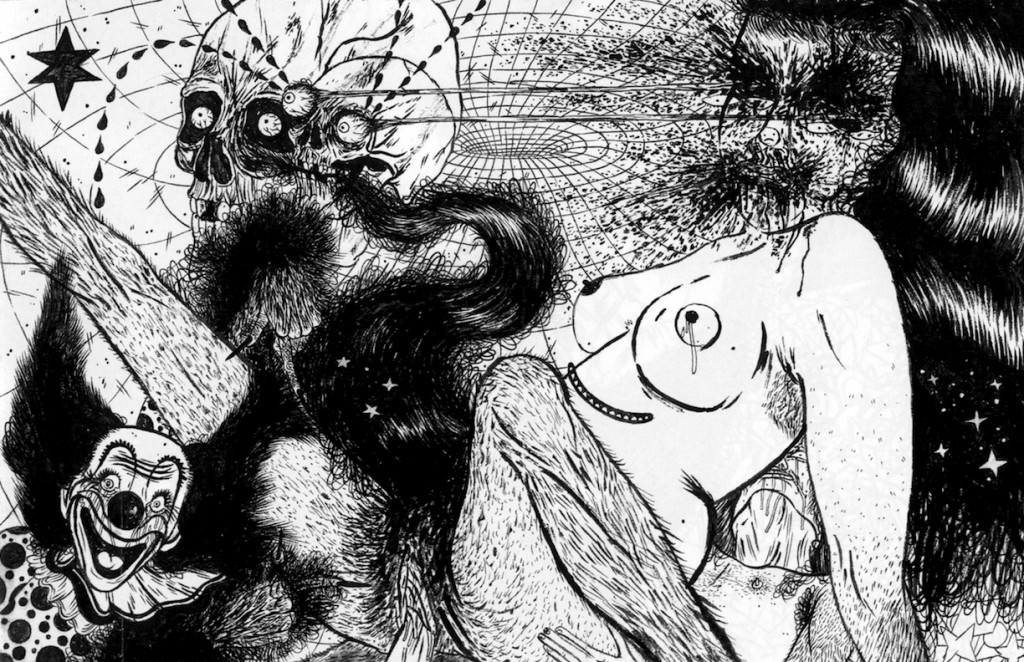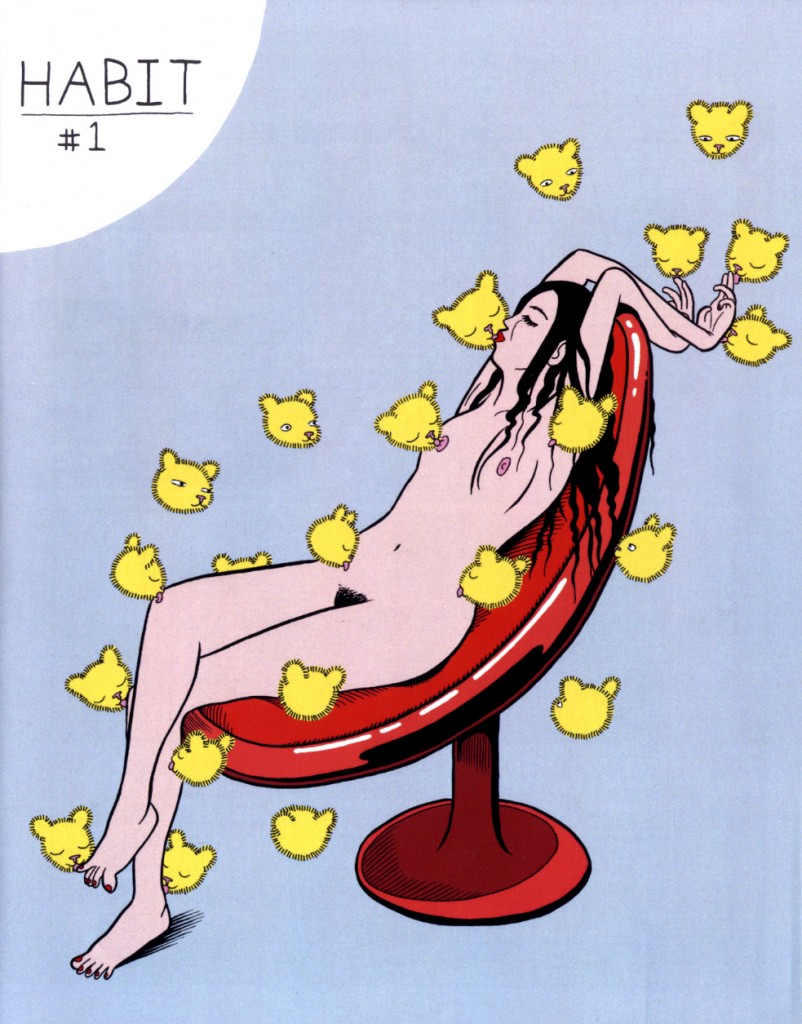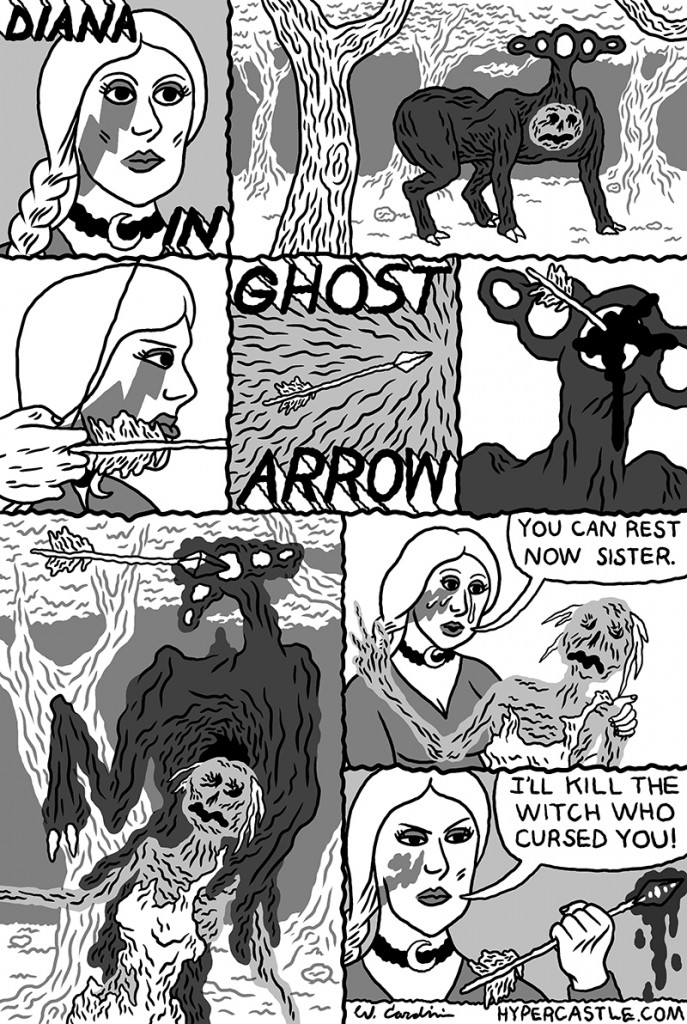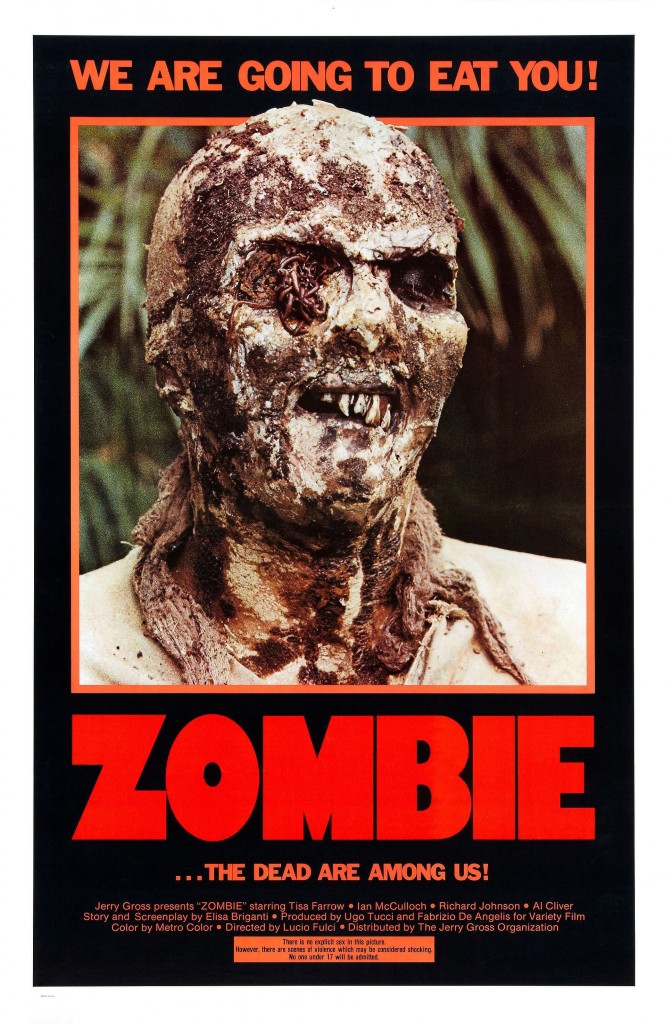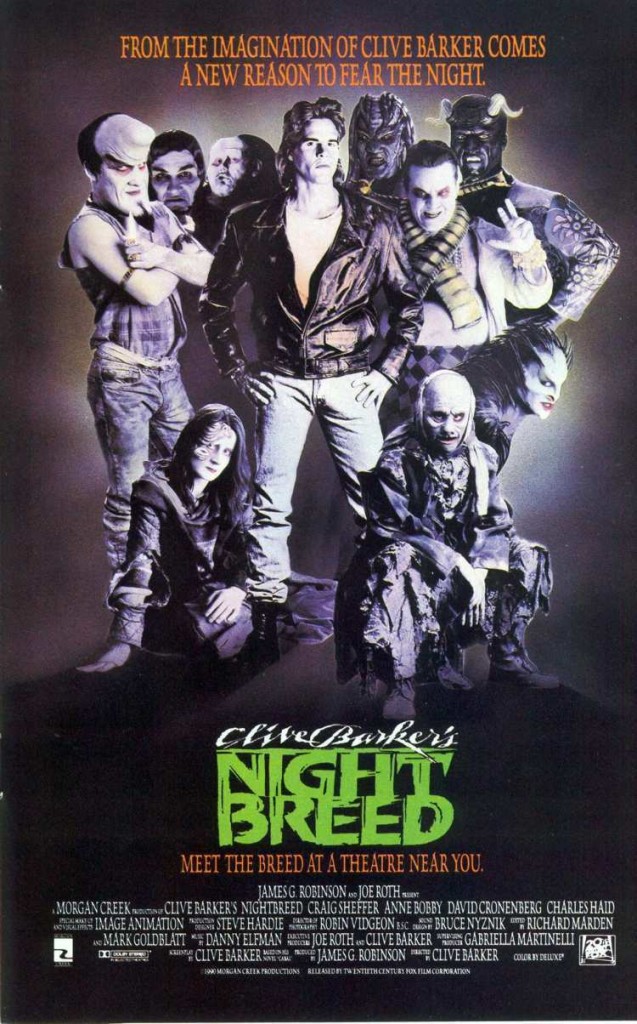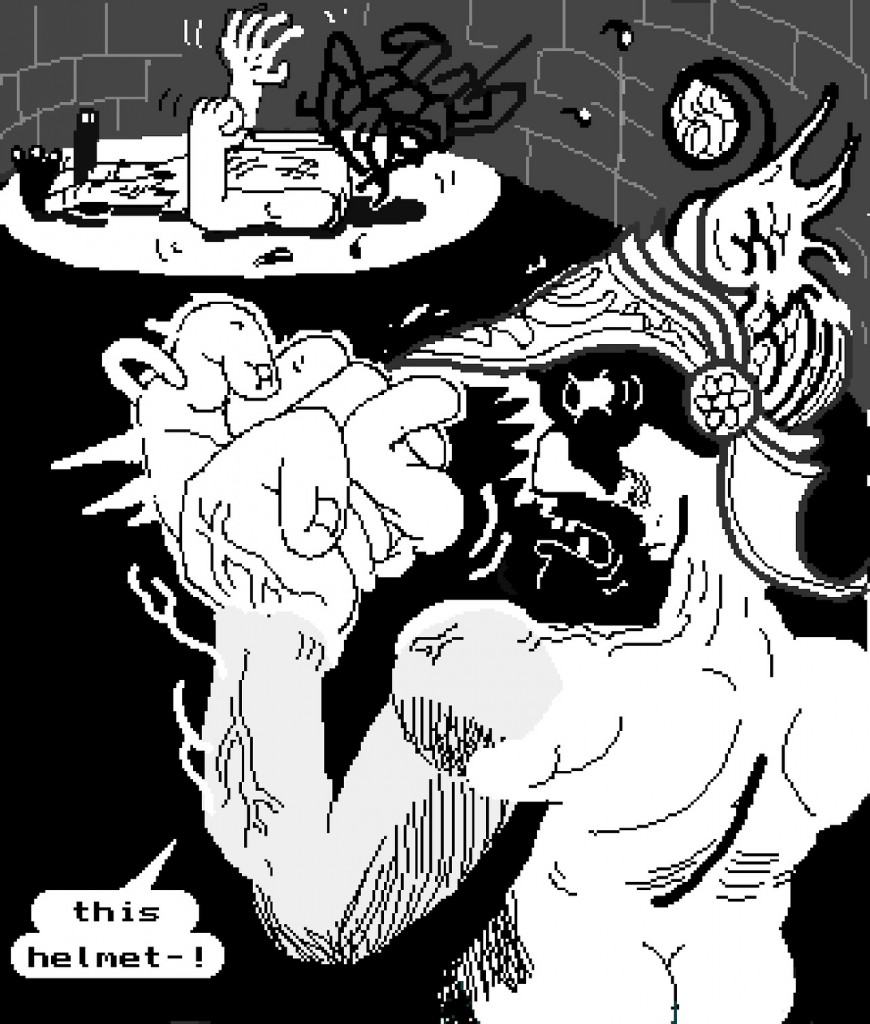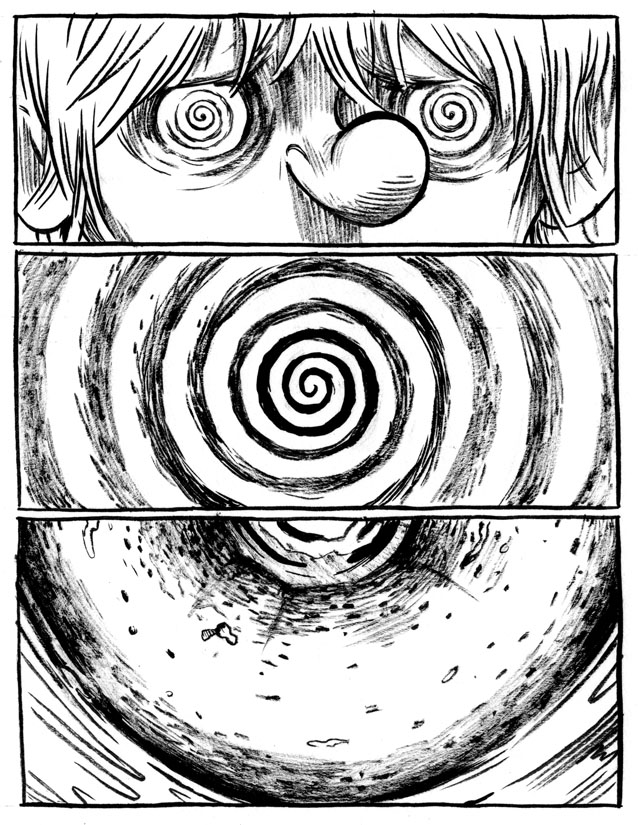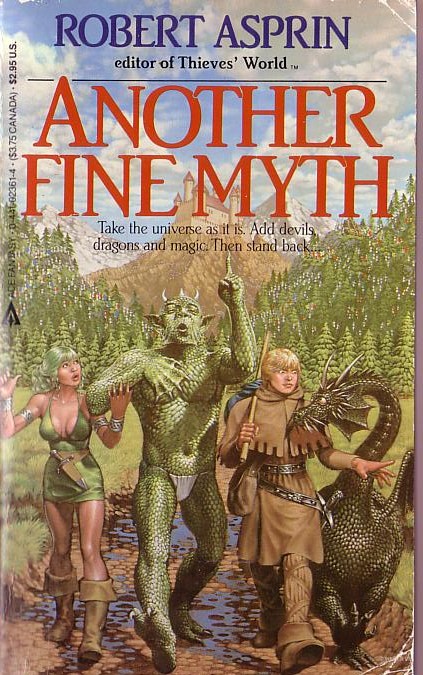Posts Tagged ‘comics reviews’
The Greatest Graphic Novels of All Time
October 18, 201611. Jack Kirby’s Fourth World Omnibus by Jack Kirby
They call Jack Kirby the King of Comics, and for good reason. As a precocious young artist, he co-created Captain America with writer-artist Joe Simon; his star-spangled superhero socked Hitler on the jaw a few years before Kirby himself helped liberate a satellite concentration camp during the Allied invasion of Nazi-occupied Europe in World War II. After returning to the States, Kirby would pioneer both romance and monster comics in the ’50s before work for which he is best remembered: the early-’60s co-creation of the Marvel Universe with his frenemy Stan Lee and fellow artist Steve Ditko. The dynamism of his artwork was miles away from the staid, square-jawed superheroics of Superman, Batman et al, and as the co-writer (and often primary writer) of Fantastic Four and other Marvel mainstays, Kirby gave birth to characters and concepts that essentially preserved the comics industry in North America after the censorious ’50s.
Kirby’s true masterwork came when, fed up with Lee’s spotlight-hogging and his own lack of creative control, he decamped to rival publisher DC and was given carte blanche to create his own line of superheroes. In genuinely prophetic fashion, the four titles that resulted — New Gods, Mister Miracle, The Forever People, and Jimmy Olsen — told one massive interlocking story about a war between rival deities, the evil half of which were led by a granite-faced embodiment of evil called Darkseid, whose son was secretly raised by the forces of good. (Sound familiar, Star Wars fans?) It’s not simply the scope of Kirby’s ambition nor the cataclysmic psychedelia of his artwork (drawn completely drug-free) that makes the Fourth World Saga, collected in four omnibus editions by DC, so compelling. No, it’s this World War II veteran’s Vietnam-era conviction that the true source of “Anti-Life” is violence itself, no matter how righteous the cause. Sadly, the epic was cut short by the publisher before Kirby could reach its proper conclusion. Several great superhero works would eventually follow (Alan Moore and Dave Gibbons’ Watchmen, Frank Miller and Lynn Varley’s The Dark Knight Returns and The Dark Knight Strikes Again, Grant Morrison and Frank Quitely’s All Star Superman, Mike Mignola and John Arcudi and Guy Davis’ Hellboy/B.P.R.D. saga), but they all labor in the humanistic, explosively creative shadow of the King.
10. Gast by Carol Swain
A work of such profound empathy that it almost feels like a hole in the world, Gast is a gentle yet ultimately unforgiving look at the ways in which the world can break down those who cannot quite bring themselves to fit in. It follows an 11-year-old girl named Helen on a trip to the Welsh countryside, during which she discovers she can talk with the wild and domesticated animals that populate its rolling landscape — all of whom speak to her of the death of a “rare bird” who lived near by. This turns out to be a farmer named Emrys, whose gender dysphoria (he wore women’s clothing and ostentatiously dyed his hair, but kept to himself out of fear of reprisal and continued to identify as male) and failing fortunes led him to suicide. Gast functions like a murder mystery with no real killer and no real victim; the investigation itself is the point, as Helen learns about this sad and secretly much-loved person’s life, and about life and death themselves in the process. Swain’s soft charcoal artwork, the unusual and descriptive angles of her drawings, and her willingness to take things slowly make for an utterly unique reading experience.
Well, this is it: I selected and wrote about the 33 Greatest Graphic Novels of All Time for Thrillist.
The Boiled Leather Audio Hour Episode 41!
September 29, 2015The Walking Dead in Westeros
We’re comparing two of the biggest shows on television in this episode of the Boiled Leather Audio Hour. One of them is an adaptation of a popular staple of nerd culture—a genre work that had only appeared in print before—which has translated its bleak themes, wide scope, and controversial use of violence into a modern-day ratings blockbuster. The other is Game of Thrones.
That’s right—the BLAH Boys are taking on The Walking Dead, and its current spinoff Fear the Walking Dead, by contrasting the shows and their source material to Game of Thrones and A Song of Ice and Fire. How does their treatment of violence in an unforgiving world of real and supernatural menace differ? What do the relationships between the original works by George R.R. Martin, Robert Kirkman, Tony Moore, and Charlie Adlard and their adaptations by David Benioff, D.B. Weiss, and AMC’s land of a thousand showrunners reveal about their respective ideas, ideals, aesthetics, and ethics? Which shows really deserve our moral outrage, and why? We’ll be examining all these questions and more. And one of us, at least, will be getting really freaking worked up. Enjoy!
Download Episode 41
Sean on the Fear the Walking Dead pilot.
At Home at the End of the World: The Long Defeat of Mike Mignola’s Hellboy
July 22, 2015…nearly all of the “Mignolaverse” titles are shot through with a sense of tremendous loss, of mind-warping waste. The world Hellboy and his friends inhabit is a brutal one, rendered unspeakably ugly by a combination of venal people whose minds are too small for empathy and the unstoppable forces they therefore unleash.
Moreover, there’s a specific sense throughout the saga that the violence wielded by its protagonists is futile, even counterproductive. The most gung-ho member of the B.P.R.D., heavily scarred ex-Marine Captain Ben Daimio, secretly harbored an evil spirit that eventually took over and rampaged through the team’s headquarters. An attempt by the artificial man Roger the Homunculus to ape Daimio’s hard-charging attitude led directly to his own death. The depiction of violence as causing more problems than it solves is a self-critique that few superhero stories attempt, and even the ones that attempt it usually ultimately reject it.
Yet Hellboy and the B.P.R.D. soldier on, fighting a menace they are too weak, and too late, to stop. Their goal, to the extent that they have one, is simply to survive, and to preserve what little light and life they can — to write an epilogue for a story that has already ended.
Comics Time: Worst Behavior
January 14, 2015How do you take something as complex and confounding as the most tumultuous time in a person’s adult life and make a concise and compelling short story out of it? Annie Mok’s solution: Echo the tumult. In as-below-so-above fashion, Worst Behavior, an illustrated memoir for the “Dedication”-themed January issue of the online magazine Rookie, utilizes a hybrid format to describe and analyze a three-year period during which a host of issues that by rights would be overwhelming individually pulled Mok’s life in a dizzying number of directions. She uses prose, comics, illustration, hand lettering, sampled/disassembled/reassembled passages from her previous work, and quotes from the artists who’ve inspired her along the way to harness that onslaught in an act of creative judo, simultaneously communicating its power and demonstrating her artistic, emotional, and intellectual ability to best it.
I reviewed Worst Behavior by Annie Mok for The Comics Journal.
Comics Time: Earthling
November 12, 2014Aisha Franz’s faces are an architectural marvel. Their features bunch up in the center of great round white circle heads crowned with hair that looks sculpted from clay. They’re bookended by apple cheeks drawn with a perpetual blush rendered as circular gray scribbles, as though a physical ordeal or an uncomfortable emotion were always only scant seconds in their past. Eyebrows, wrinkles, creases, and smile lines push the eye toward the beady eyes and pug noses they ring. (The look is very Cabbage Patch Kids, but there’s a reason those weird-looking things made millions.) They broadcast emotion from the center of the head like a spotlight focused down into a laser — curiosity and confusion, peevishness and puckishness, boredom and loneliness and anger and, very occasionally, satisfaction and delight. In a book where Franz’s all-pencil style — the lack of inks and the deliberately boxy and rudimentary props and backgrounds suggesting a casual, tossed-off approach completely belied by Franz’s obvious control of this aesthetic — works very well, those faces work best of all.
The story is another matter.Earthlingtells the not-quite-multigenerational tale of a suburban mother and her two daughters — one on the cusp of puberty, the other of college. The book derives its title from the storyline of the younger daughter, who encounters and attempts to befriend an alien visitor she hides in the toy chest in her room. But it’s equally concerned with her older sister, who’s negotiating the needs of an estranged best friend, a physically eager but emotionally aloof suitor, and an absent father whose scheduled return is impending; and with their mother, who alternately seeks to discipline and connect with them while pondering a turning point in her own past. None are happy; all deal with their unhappiness alone. That’s the only choice allowed them in the book’s closed emotional system. Franz casts every supporting character as mean, manipulative, or oblivious. She paints her protagonists with a similar palette, or at least portrays them as so fixated on their own difficulties that they are useless to one another. Thus the storytelling deck is stacked against each to such a degree that we are forced to come to the same conclusions they do: no one understands them, the situation is hopeless, and only rash renunciations of responsibility or intercession by a well-timed savior can liberate them. Perhaps inadvertently,Earthlingteases out the undercurrent of narcissism that those of us who suffer from depression often suspect, and fear, helps fuel those gray-pencil periods in our lives, but only to reinforce it.
Comics Time: The Basil Plant
November 12, 2014As an object, The Basil Plant is not much to look at. The same can’t be said of author Laura Lannes’s cartooning — as economical and as energetic as a well-delivered joke, with a thick, versatile line, and figurework that alternately recalls Anders Nilsen and Gabrielle Bell as played for laughs. The package containing that cartooning, however, is a bog-standard staple-bound minicomic, about 4.5″ x 3.5″, black and white, xeroxed, one page = one panel, its sole two-page spread not even located in the center of its 28 pages. You’ve seen a million of these things if you’ve been to a single small-press show. If you pick it up with the intention of reading it, you’re probably disinclined to be impressed. This is because you’re a sucker, which is what Lannes is counting on. The Basil Plant relies on your belief that you know what you’re in for. You think you know, but you have no idea.
I reviewed The Basil Plant by Laura Lannes for The Comics Journal.
Comics Time: Gast
October 23, 2014Murder mysteries are defined by their central, structuring absences. A hole occupies the space where a life once lived. That hole can never be filled. But through an investigation of the facts, an uncovering of the truth, and a pursuit and capture of the killer, we can define and discover the shape of the hole to a degree of accuracy sufficient to put a cover on it, so that the still-living may proceed past it once more.
Gast, a graphic novel of exquisite and accomplished empathy and restraint by alternative-comics veteran Carol Swain, tells a story centered on a hole far harder to close up than most. It proceeds with the methods and mechanics of investigation and discovery. The scene of the crime is visited. The victim’s routine is examined. The friends and acquaintances of victim and suspect alike are questioned. Evidence is recovered and cataloged: a discarded make-up bag, a shell casing, a stain on the bedroom wall. Means, motive, and opportunity are all established.
But there is no crime, because killer and victim are one and the same. There is no pursuit, no arrest, no trial, no conviction, because there can’t be. We don’t so much as see the dead person once — not as a corpse, not in a flashback, not in a photograph. All we have is what is learned by a quiet, curious eleven-year-old girl, Helen, a lover of nature and long walks who must piece together even the most basic of facts about the deceased. At first we don’t even know the deceased is a person: Helen is simply told of a “rare bird” who killed himself nearby, and as a Londoner newly arrived in the rural region of Wales where the story is set and unfamiliar with the antiquated expression, she starts her search looking for an actual bird. Like the pages of the ever-present journals, Helen starts with a completely blank slate. Over the course of many long wordless walks and quiet conversations with both her human and, mysteriously, animal neighbors, she slowly fills the tabula rasa with discoveries: suicide, gender dysphoria, the allure and peril of solitude, and the life and death cycle of this farming community and its inhabitants. She learns that most adult of lessons: We each of us have roles we play in the lives of others, shapes we take in their worlds—shapes that can be integral to those lives’ landscape yet still not save us.
Comics Time: Honey #1
October 10, 2014Honey #1 is an elegantly drawn, exuberantly paced, spectacularly colored workplace dramedy/romance. It’s an action-adventure story set in a fantasy-indebted world with prominent horror elements. It’s a radical reconsideration of anthropomorphism and “funny animal” comics. It’s a serious exploration of how communities shore up certain strengths of the individuals they comprise while also pushing them all toward willful ignorance of wrongs committed in their name. It’s a gedankenexperiment about an all-woman society — imagining it, putting it through its genre-story paces, examining female friendship, romantic relationships, and enmity in the fresh air created by the near-total absence of men and thecompleteabsence of men in positions of power. It’s hugely, admirably, refreshingly ambitious for a twelve-page comic book. If the work cartoonist Céline Loup assembles from these myriad parts is not without flaw, that’s almost beside the point.
Comics Time: July Diary 2014
September 15, 2014At first glance, Gabrielle Bell’s six-panel daily diary comics don’t have a lot in common with the Mines of Moria sequence in Peter Jackson’s The Lord of the Rings . Or at any number of subsequent glances, I suppose. But the more Bell I read, the more I think they share a primary strength: a sense of space, of environment. Autobio slice-of-life comics, by the nature of what most of us tend to do with our lives every day, often consist in large part of conversations, either with a small number of other parties or within the head of the diarist as they go about their day. Unless those conversations reference a specific landmark, cartooned depictions of them can, and often do, devolve into dialogues that could be taking place anywhere, or nowhere. They have all the spatial context of action figures or dolls or sock puppets held aloft by the cartoonist, one in each hand, and made to speak with the voices of the participants.
Not so with Bell, and not so in the most recent iteration of her annual July Diary project. Hers is a world where rooms, furniture, streets, buildings, and human bodies are arrayed in a three-quarter cheat to the audience, enabling us to see into corners, grasp the depth and dimensionality of each space. Her inimitable spotted blacks — little jagged-edged rectangular smudges — set off the surfaces of the objects with which she is surrounded, and pool in the wrinkles of her characters’ clothes like ink. It’s impossible to look at a Gabrielle Bell diary-comic page and reduce it to stick figures against a blank backdrop, any more than you could do so with the fellowship of the Ring dodging orc arrows as they flee down those crumbling steps. Her apartment, her garden, the streets of her neighborhood, the wilderness surrounding the trailer where her mother lives following the house fire that understandably dominates the diary — Bell makes them distinct, inhabitable, navigable spaces. That her rigid, six-panel grid closes those spaces off is a feature, not a bug. Each panel feels like a tiny, beautifully constructed diorama, where Bell and her acquaintances will act out the same moment forever.
I reviewed Gabrielle Bell’s July Diary 2014 for The Comics Journal.
Comics Time: Baby Bjornstrand
September 3, 2014A thing comes into three lives, without warning or explanation. A thing leaves those lives in much the same way. The time between: Baby Bjornstrand, the new Renee French graphic novel completing and collecting the webcomic of the same name. In the past, I’ve written that the hazy, watery wasteland inhabited by Baby Bjornstrand‘s masked, hooded protagonists and monstrous fauna evokes a post-apocalypticism that is, if not belied, then at least transfigured by the comic tone of the proceedings. Now that the series is finished, that’s only true to a point. As the uniform proscenium staging of its panels suggests, Bjornstrand remains much closer to Samuel Beckett than Stephen King, despite French’s astonishing proficiency with painstakingly penciled menace. Yet its morose ending has a bite that doesn’t require the jaws of a monster.
I reviewed Baby Bjornstrand by Renee French for The Comics Journal.
Comics Time: Alien Invasion III
August 14, 2014True, in a way, to its title, Lauren “Lala” Albert’s Alien Invasion III has two primary concerns: aliens and invasiveness. The former are presented in the fashion that has become Albert’s trademark as an artist working with science-fictional imagery in an underground context — otherworldly and elfin, their ubiquitous third eyes a collective locus of mystical enlightenment, erotic fascination, and viscous physicality all at once. The invasions are varied. Aliens visit Earth, humans visit other worlds, humans and aliens travel between worlds together. Alien biology is probed by a human performing an autopsy, explored by two aliens in a body-modification ritual with romantic undertones, inserted unexpectedly and forcibly into an unsuspecting human’s more familiar body. In all four cases the theme is intimacy, invited or not.
I reviewed Alien Invasion III by Lauren Albert (aka Lala Albert) for The Comics Journal.
Comics Time: Danny Boy
August 8, 2014…the ending is otherwise the strongest section of the comic, the one place where Danny Boy takes on a life of its own. It does so in death. In the end, father and son are buried side by side, first their bones and then even their coffins breaking down as the dark earth reclaims them. In the end, the totemistic pipe and locket that Faret had used as shorthand for each member of the pair are all that remain, and they too are disintegrated and consumed before the final black panel. A realist might question the staying power of a corncob pipe in a grave, while a reader partial to extremes might miss a full-fledged depiction of dead bodies rotting away into nothingness (admittedly this is where my sympathies lie), but both critiques are superfluous to the sequence’s purpose, if not its power. In these final pages, Faret unearths an unspoken element of “Danny Boy” and puts it on display: The song’s final line is “And I shall sleep in peace until you come to me,” but of course at that point in the song the child has already returned, is in fact kneeling on the grave. It’s death the parent is looking forward to sharing with his child, because only then will their reunion be complete. Faret shows what that would look like, taking the original and adding a stanza of her own.
Those final pages present a potentially rewarding path for Faret to follow as an interpreter of existing stories. It reflects the same sensibility on display in, say, her luminous, horror-tinged scratchboardillustrations for Arthur Miller’s The Crucible. Though the whole point of Miller’s witch-hunt parable is that the thing was bunkum, Faret casts her cast of goodwives in a seemingly supernatural light, suggesting that terrible forces and tremendous powers were in play here — just not in the way the persecutors believed. Neither here nor in the end of Danny Boy is Faret indulging in the aforementioned glurge, lacing contemporary mores into past events in order to make readers feel good about their unearned ethical superiority (though she’s not entirely immune to this temptation); rather, she’s tapping into ideas and sentiments present in the characters and giving them freedom to manifest themselves in ways the characters could never do. Danny Boy may be a failed experiment, but in conducting it Faret has collected data that could well yield happier results a season or two down the line.
I reviewed Danny Boy by Kjersti Faret for The Comics Journal.
Comics Time: Configurations
July 30, 2014I hesitate to use the formulation “more than just a comic” in describing “Configurations”, the recent webcomic series Aidan Koch published through TCJ contributor Frank Santoro’s Comics Workbook tumblr. Comics are whatever you put into them, and “Configurations,” certainly a comic, puts in plenty. But it feels less like a strip you read and more like a participatory event. It’s the rare experimental work that makes you feel as though you’re there in the lab with its creator, conducting that experiment yourself.
Comics Time: This One Summer
July 24, 2014At the beginning of This One Summer, its main character, Rose, splashes down into her bed, holding her nose and falling backwards as if leaping off a dock into the lake nearby. At the end she and a friend dig a hole in the beach big enough to contain her, and she lies in it, posing for her last picture of the summer — this is how she wants to remember it. In between, nature, as drawn with preposterous skill by Jillian Tamaki, proves capable of enveloping her without her help. Big summer-night skies, full of stars and moonlight. Bright summer sun, hanging overhead like it will never set again. Wet, heavy summer rain, seemingly just as endless, pouring into puddles drop after drop. Trees and vines and bushes and grass and undergrowth, verdant, overripe to the point of hysteria. The lake, which is alternately drawn dominating a spread vertically like a monolith, suspending the joyous bodies of tumbling teenagers in its inviting murk, and enveloping them like a sunlit shroud when they no longer wish to be found. Against this brush-stroke backdrop stand Rose and the other impeccably cartooned characters, whose stylized simplicity (relatively speaking; no sense that these are real people is lost) when juxtaposed with those wall-of-sound environments makes them feel like inner tubes bobbing in the water, or stones tossed in it. Immersion is This One Summer‘s strength, and it works alarmingly well for the story that cousin-collaborators Jillian Tamaki and Mariko Tamaki are telling. It’s a young-adult graphic novel, and young adults are constantly tossed into new circumstances by forces beyond their control, from puberty to parents. Out of their depth, do they sink or swim?
I reviewed This One Summer by Jillian Tamaki and Mariko Tamaki for The Comics Journal.
Comics Time: How to Be Happy
July 24, 2014The first moment — but certainly not the last — that made me stop reading How to Be Happy, turn back the pages, and immediately re-read them came early. “In Our Eden”, the lead-off piece in Eleanor Davis’s masterful new collection of short stories, concerns a back-to-nature commune driven to dissent and dissolution by its founder’s purity of vision. Some members chafe at the convention by which every man is called Adam, every woman Eve. Others fall away when the leader, a towering and barrel-chested figure with a ferocious black beard like something out of a David B. comic, takes away all of their prefab tools. The rest depart when he insists they neither farm nor kill for food, literalizing and reversing the Fall’s allegory of humanity’s move from hunter-gatherer to agrarian societies. At last it’s just this one Adam and the Eve he loves. By the next time we see them, Adam’s gargantuan physique has been pared away, his ribs visible, his nose reddened for a sickly effect, demonstrating Davis’s remarkable ability to wring detail and expressive power out of the simple color-block style of the piece. He comes across Eve, nude and stork-skinny, washing her long hair in a river. He goes to her, nude himself. “I’m ready for the bliss to come,” he says right to us in one of the recurring panels of first-person narration that have been peppered through the comic. They embrace. “I’m ready for the weight to lift.” They kiss.
I turned the page, curious as to how the story would end. Some final irony? Some subtle but biting indictment of utopian folly? A widening of the view to deny the lovers centrality in their world? None of the above: the story had already ended. The build-up I’d read into it — a crescendo of extremism that would end with Adam’s hubris exposed and exploited — didn’t exist. The easy climax, the stacked-deck scenario so common in stories about true believers in which author and audience get over at the expense of the characters when the latter are made to look foolish for foibles the former recognize instantly, never comes. The climax had come two pages before, when I turned from one page to the next and reached a splash-page image of the moment when Eve turns to see her Adam. This moment of connection is the story’s resolution. The use of Adam and Eve’s human bodies to communicate to one another, to seek the bliss that’s coming, to lift that weight, is the image Davis wants us to leave with. No moral, no punchline, no muted epiphany — discarded along with all the other distractions, they leave only Edenic bliss behind.
I reviewed Eleanor Davis’s masterful comics collection How to Be Happy for The Comics Journal.
Comics Time: Sorry Kid
June 26, 2014Sorry Kid folds out like a 22×17 broadsheet. When examined closely, it reveals itself to be two 11×17 pages, their surface murky with black xerox ink, joined together by sparkly rainbow-silver tape. This juxtaposition in its construction encapsulates the eight-page whole, which sees Clark alternate heartrending grappling with the overpowering grief of her father’s death and small welcome gestures in the direction of comfort.
All of the text is borrowed from apparently much-loved sources: Inside, writer Hélène Cixous’s novel on this theme; Ursula K. Le Guin’s fantasy classic The Farthest Shore; the Cocteau Twins song “Know Who You Are at Any Age”. It’s a tacit acknowledgement that recognition of your pain in painful work is often as comforting as can be.
I reviewed my first comic in ages, Sorry Kid by Katrina Silander Clark, for The Comics Journal.
Comics Time: Exorcise Book and Habit #1
December 16, 2013I wrote about two of my favorite comics from 2013, Heather Benjamin’s Exorcise Book and Josh Simmons’s Habit #1, for Zainab Akhtar’s year-in-review series at Comics & Cola.
Vorpalizing: Emily Carroll, William Cardini, Lucio Fulci, Clive Barker
October 30, 2013Recently on Vorpalizer I reviewed Emily Carroll’s masterful new horror comic “Out of Skin.”
I reviewed William Cardini’s very smart fantasy one-pager “Diana in Ghost Arrow.”
I wrote about being terrified by the poster for Lucio Fulci’s Zombie/Zombi 2.
And I wrote about being terrified by Clive Barker’s Nightbreed but watching it anyway, which is how it became my first real horror movie.
Comics Time: Coyote Doggirl and Nux Yorica
October 16, 2013Recently I reviewed Coyote Doggirl by Lisa Hanawalt and Nux Yorica by Cameron Hawkey for Vorpalizer. It’s really remarkable how much strong artcomics work is being made without ever needing touch a single paper page to read it.
Vorpalizing: Ben Catmull, Sophie Franz, Robert Asprin
October 7, 2013Recently on Vorpalizer, I reviewed Monster Parade by Ben Catmull, Andy by Sophie Franz, and Another Fine Myth by Robert Asprin.

